Trees Birds Mammals Fish Amphibians Reptiles
Wild Algarve
Bookshop
Centranthus ruber - Red Valerian
Phylum: Magnoliophyta - Class: Equisetopsida - Order: Dipsacales - Family: Caprifoliaceae
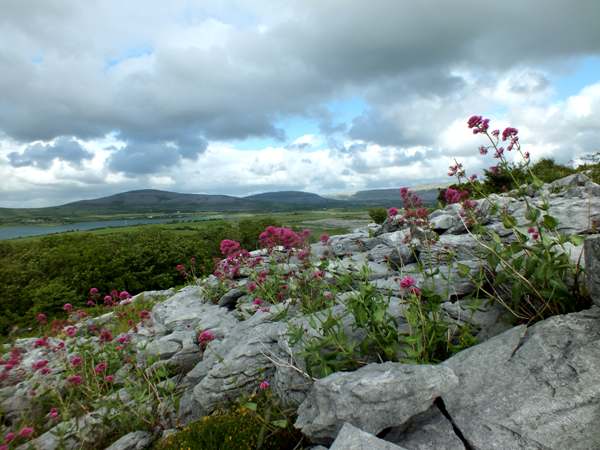
A walk on the wild side is not necessary if you want to enjoy the sight of masses of Red Valerian, because this wildflower is very much at home in urban settings too, although it saves some of its most spectacular displays for rocky limestone-rich sites such as south-west Ireland's famous Burren (shown above)..
Description
A perennial plant with braching stems and opposite grey-green lanceaolate leaves, stalked near the base of the plant and unstalked further up, Red Valerian grows to a height of 80cm. Stems are topped by dense panicles of red, pink or white flowers. (White and red forms often grow together - there is an example further down on this page.)
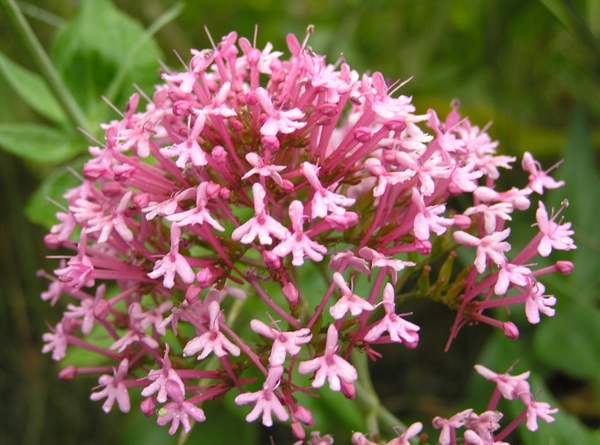
Individually the flowers are 8-10mm long and comprise a corolla in the form of a slender tube with five lobed petals of unequal length and a small spur at the base.
Distribution
Originally a wildflower of the Mediterranean region, this European wildflower has been introduced into the wild in northern Europe, mainly via garden escapes. In parts of Australia and North America where Red Valerian occurs it is an introduced alien species.
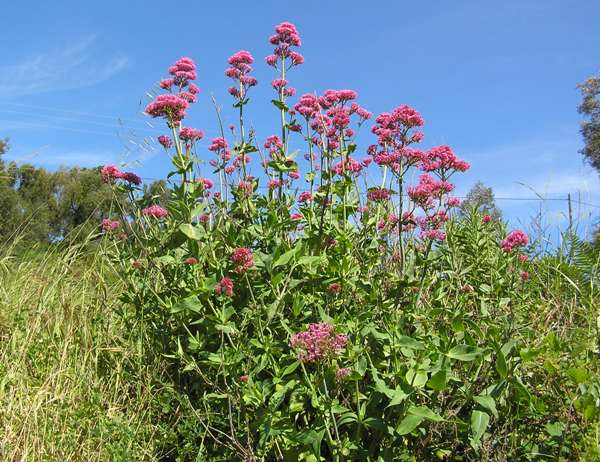
Habitat
Between the stonework of walls, bridges and other vertical surfaces seem to be very attractive to this pretty wildflower, which is most commonly seen in coastal districts. Red Valerian is a common sight on railway embankments and coastal paths and on some reservoir dam walls.
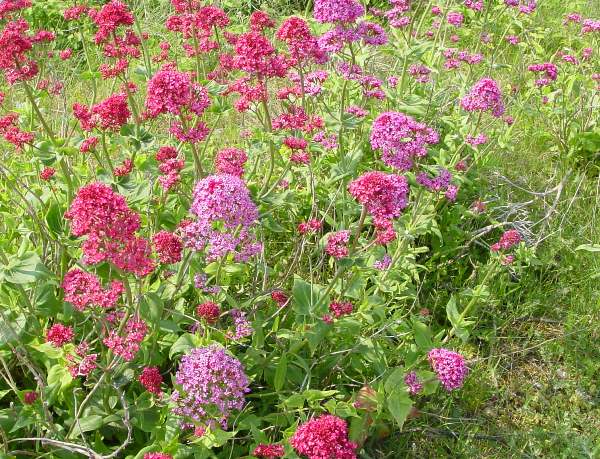
Blooming Times
The flowers first appear towards the end of May, andyou will find red valerian (which also has a white variety, as shown above) in flower right through to the end of September and in sheltered places right through to the end of the year.
Uses
The leaves of Red Valerian and roots can be eaten - the leaves either fresh in salads or lightly boiled, and he roots boiled in soups. Opinions differ as to whether either makes particularly good eating. Although Red Valerian is reported by some sources to have medicinal properties, this is probably due to confusion with Common Valerian, Valeriana officinalis.
(We strongly advise against eating or using as medicines any plants without first obtaining qualified professional advice.)
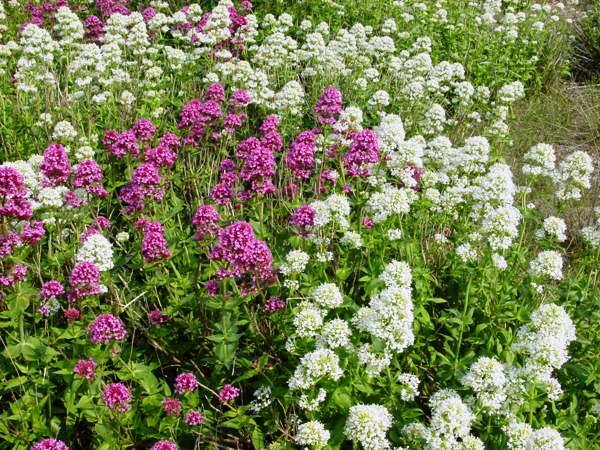
Etymology
Centranthus, the generic name, comes from the Greek words kentron, a spur, and anthos, a flower.
The specific epithet ruber means red - a reference to the colour many but certainly not all of the flowers of Red Valarian.
Similar Species
Common Valerian Valeriana officinalis has very similar but much paler pink flowers; it usually blooms from June until the end of August. The leaves of Common Valerian are pinnate, pointed and toothed, whereas the leaves of Red Valerian are oval or lanceolate.
Sue Parker's latest ebook is a revised and enlarged edition of Wild Orchids in The Burren. Full details here...
Buy it for just £5.95 on Amazon...
Sue Parker's new ebook is a comprehensive and fully revised edition of her acclaimed field guide to the Wild Orchids of Wales. Full details here...
Buy it for just £5.95 on Amazon...
Please Help Us: If you have found this information interesting and useful, please consider helping to keep First Nature online by making a small donation towards the web hosting and internet costs.
Any donations over and above the essential running costs will help support the conservation work of Plantlife, the Rivers Trust and charitable botanic gardens - as do author royalties and publisher proceeds from books by Pat and Sue.